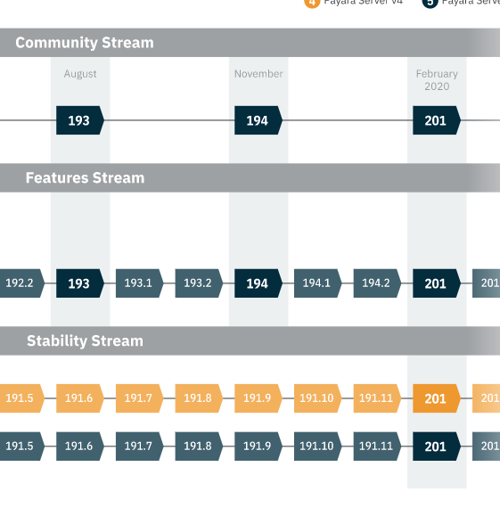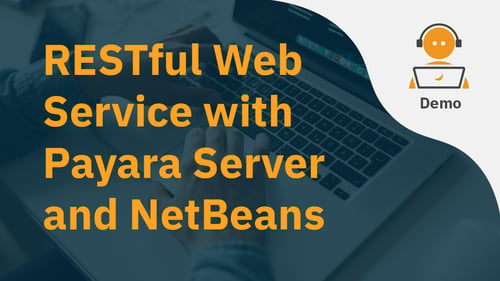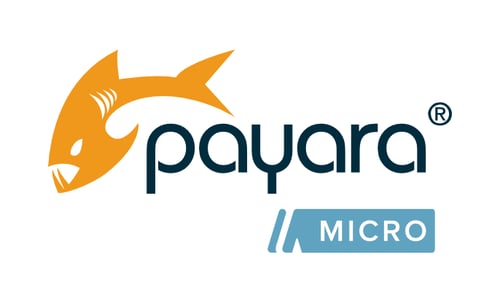Archive from February 2020
Interview with the First Java Champion in the Czech Republic - Ondrej Mihalyi
Published on 27 Feb 2020
by Jadon Ortlepp
Topics:
news and events,
Payara Life
|
0 Comments
How do you feel about being a Java Champion?
I have to admit I was genuinely surprised because I didn't see it coming. I knew there was no Java champion in Czech Republic, but I never thought that I would become the first one. It's an honour for me. Especially because I'd already met many Java champions and became very good friends with some of them. And now I'm part of the gang of all those people that are making so much for the Java community.
Community Features Added to Stability Stream in Payara Platform 5.201 Release
Published on 25 Feb 2020
by Andrew Pielage
Topics:
New Releases
|
0 Comments
The first release of the Payara Platform in 2020 syncs the Stability and Community streams. For those not in the know, the Community stream is what we call our quarterly public releases, and the Stability stream is what we call our monthly bug fix-only releases for those with the supported version of Payara Platform Enterprise, (see here for more info on the release streams).
Coming Soon: Data Grid Encryption Tech Preview in Payara Server 5.201
Published on 19 Feb 2020
by Andrew Pielage
Topics:
Scalability,
New Releases
|
0 Comments
Encryption of the data stored within the data grid of Hazelcast (the technology underpinning our deployment groups and clustering in Payara Platform 5) has until now required a Hazelcast Enterprise subscription (see Payara Scales). While this remains an option for those who would like the additional features it provides (such as WAN replication), we’ve begun introducing this particular feature into Payara Server itself to provide it to you without needing an additional subscription.
How to Deploy an Application on Payara Server 5
Published on 13 Feb 2020
by Jonathan Coustick
Topics:
Payara Server 5 Basics
|
5 Comments
This is Part 2 of our Payara Server - Back to Basics series, see Part 1 - Installing Payara Server on Ubuntu here.
In order for a web application to run, it must be first deployed on an application server such as Payara Server. Deployment in the context of web applications is the act of installing the application on a server. It allows requests to be handled and so on. This guide will provide you with a few different ways to get your application running.
Payara Platform 201 Release - More Updates to Monitoring Console
Published on 11 Feb 2020
by Jan Bernitt
Topics:
JakartaEE,
New Releases,
Payara InSight
|
0 Comments
In Payara Platform 5.194 we introduced the monitoring console. The upcoming 5.201 release now offers numerous improvements and additions. We continued to followed our vision of a monitoring tool that users can configure to their needs, ranging from new tools such as watches and alerts, to new colour themes and settings users can tweak to match their individual preferences.
Create a RESTful Web Service with Payara Server 5.194 & NetBeans
Published on 10 Feb 2020
by Andrew Pielage
Topics:
Demo,
REST,
NetBeans
|
3 Comments
What is Docker and How is it Used with the Payara Platform (Japanese)
Published on 07 Feb 2020
by Kenji Hasunuma
Topics:
Docker,
Japanese language
|
0 Comments
MicroProfile and Jakarta EE Technical Alignment
Published on 06 Feb 2020
by Steve Millidge
Topics:
MicroProfile,
JakartaEE
|
8 Comments
The transition of Java EE to the Eclipse Foundation is now complete with the release of the Jakarta EE 8 Platform Specification and the compatible implementations, including Payara Server. The release plan for Jakarta EE 9 is also approved, and will move all the Java EE APIs to the jakarta namespace - providing a future platform for Jakarta EE 10 and beyond.
Faster Payara Micro Startup Times with OpenJ9
Published on 04 Feb 2020
by Patrik Duditš
Topics:
Payara Micro
|
3 Comments
One of the performance metrics that are frequently compared by developers are startup times. Payara Server is designed to be manageable at runtime, with a central management server (DAS - domain administration server) and multiple instances, and as such is not optimized for extremely fast startup time. Payara Micro on the other hand, is optimized to run predefined workloads with a stable configuration at runtime, and is therefore a better fit for for comparing start up time metrics.
In this blog, let's take a look at how you can configure Payara Micro for fast startup time by utilizing the class data sharing feature of Eclipse OpenJ9.








